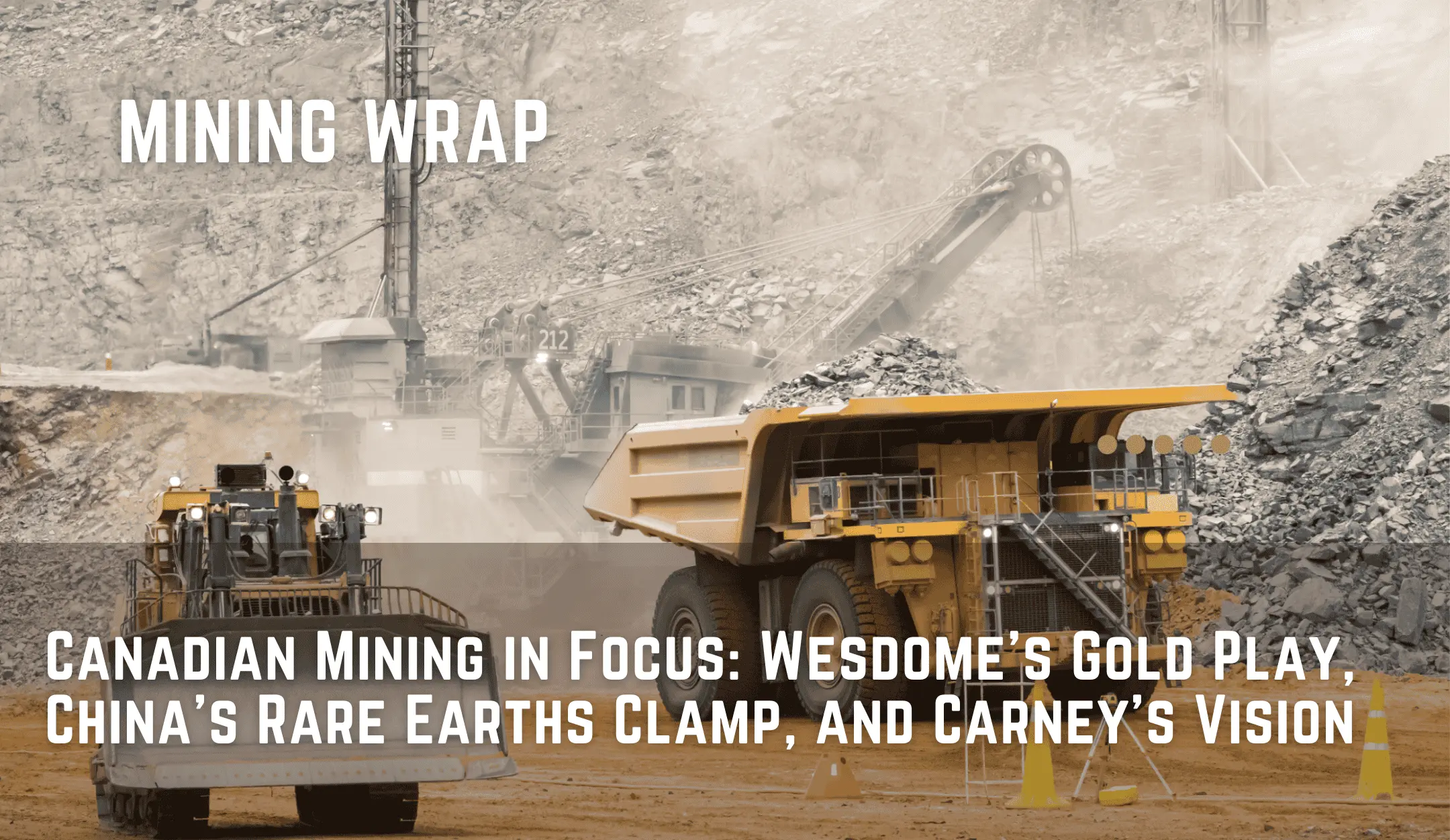
In a week defined by market volatility, inflation fears, and shifting global power dynamics, Canada’s mining sector delivered strong signals of resilience and opportunity. Gold surged to new historic highs, uranium stocks firmed, and political leaders laid out competing visions to fast-track mining and energy projects. From boardroom deals to the Ring of Fire, the industry finds itself at the nexus of global disruption and national ambition.
Gold extended its safe-haven rally, smashing through previous highs to trade at $3,222.60 USD per ounce, the highest on record. Investors rattled by geopolitical tensions and trade war escalations rushed into bullion, triggering the sharpest single-day price jump in years.
The surge reflects deepening concerns over persistent inflation and monetary uncertainty. Miners like Newmont Corporation and Lundin Gold have directly benefited—Lundin’s Fruta del Norte mine in Ecuador saw Q1 output rise 5% to 117,313 ounces, reinforcing bullish momentum in the sector.
China’s April 4th move to restrict exports of seven rare earth elements, including dysprosium and terbium, has dramatically altered global supply chains. As the world’s dominant REE refiner, China's decision forces manufacturers to rethink sourcing.
Canada, although still an emerging player in REEs, stands to benefit. Companies like Defense Metals are advancing projects such as the Wicheeda deposit in British Columbia. A new prefeasibility study prepared by Hatch and SRK confirms its high concentrations of neodymium and praseodymium—minerals essential to EVs and wind power.
Wesdome Gold Mines announced a $40 million acquisition of Angus Gold, gaining access to the Golden Sky project near Wawa, Ontario—strategically adjacent to Wesdome’s Eagle River mine. The move signals a shift toward asset consolidation and synergy-driven growth, led notably by two women CEOs.
The transaction, expected to close in Q2 pending shareholder and court approvals, is poised to enhance Wesdome’s production corridor while supporting broader trends toward increased efficiency and scale in the gold mining landscape.
With a federal election looming, political leaders are racing to win over resource-rich constituencies with bold policy promises.
Liberal leader Mark Carney outlined a "One Project, One Review" plan to streamline permitting by recognizing provincial assessments, while expanding tax credits for defense and clean tech-related minerals. The policy aims to accelerate Canada’s critical minerals roadmap and cut bureaucratic delays.
Meanwhile, Conservative leader Pierre Poilievre doubled down with his “One-and-Done” permitting strategy. His proposal fast-tracks ten key mining and infrastructure projects, pledging $1 billion to develop access roads in Ontario’s Ring of Fire—home to vast deposits of nickel, cobalt, and chromite.
Both leaders are vying to make Canada a global mining powerhouse amid rising demand for strategic resources.
Capital continues to flow into exploration and development. Arras Minerals raised C$16.1 million for its Kazakh copper-gold projects, backed by Teck Resources, while Fathom Nickel upsized its private placement to C$1.5 million amid robust investor interest.
On the innovation front, Datamine launched Studio Geo, a cutting-edge geological modeling platform aimed at streamlining mineral data workflows and boosting real-time decision-making. Its modular design and seamless integration are a game-changer for mine geologists and planning teams.
KSB Mining Academy celebrated its inaugural graduating class, honoring 102 mining professionals across 29 countries. The initiative, which includes specialized certification paths in pump applications and mining support, represents a growing investment in technical talent and long-term operational excellence.
Winsome Resources' Renard project in Quebec is progressing steadily, focusing on integrating lithium production with carbon sequestration. The company has extended its exclusive option to acquire the Renard site until August 31, 2025, at a cost of C$8.5 million, providing additional time to assess carbon sequestration opportunities and explore strategic partnerships.
An independent study conducted by Dr. Liam Bullock highlighted the site's potential for carbon dioxide removal, estimating capacities of 203–458 kg per ton of rock. This positions Renard as a promising location for carbon sequestration efforts.
Winsome has also formed strategic partnerships to advance its carbon sequestration initiatives. Collaborations with Isometric and Exterra Carbon Solutions aim to develop innovative carbon removal technologies and explore the use of mining residues for CO₂ emission reduction.
That’s all for this week’s mining wrap. Got thoughts or feedback? Reach out to us at info@skrillnetwork.com. You can also join the conversation on our Facebook, LinkedIn, Twitter, or Instagram pages—let’s keep the dialogue around mining and investment alive and thriving.
Disclaimer - Skrill Network is designed solely for educational and informational use. The content on this website should not be considered as investment advice or a directive. Before making any investment choices, it is crucial to carry out your own research, taking into account your individual investment objectives and personal situation. If you're considering investment decisions influenced by the information on this website, you should either seek independent financial counsel from a qualified expert or independently verify and research the information.
Tags:
RECENT POSTS
TAGS
Subscribe to the Skrill Network Newsletter today and stay informed
Recommended Articles